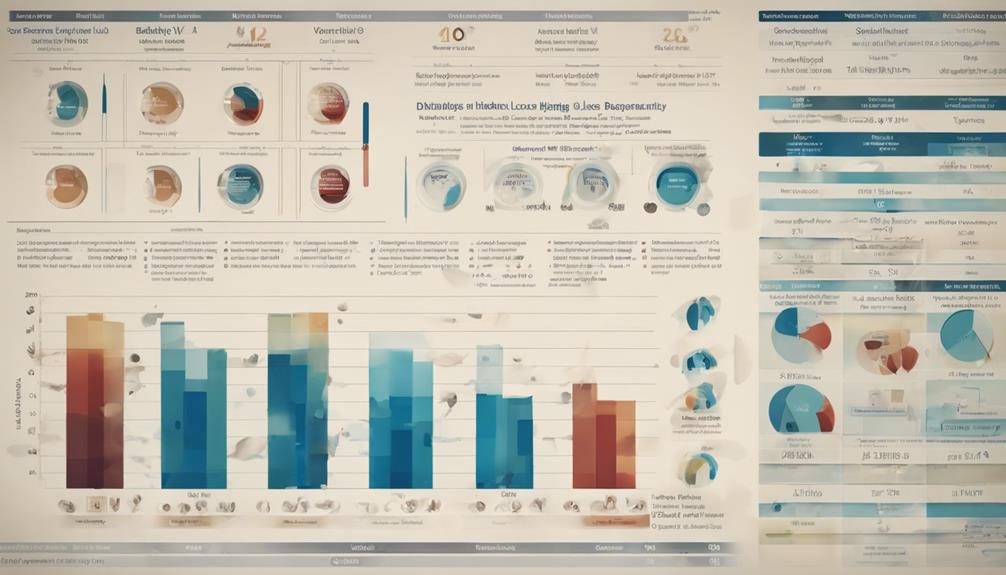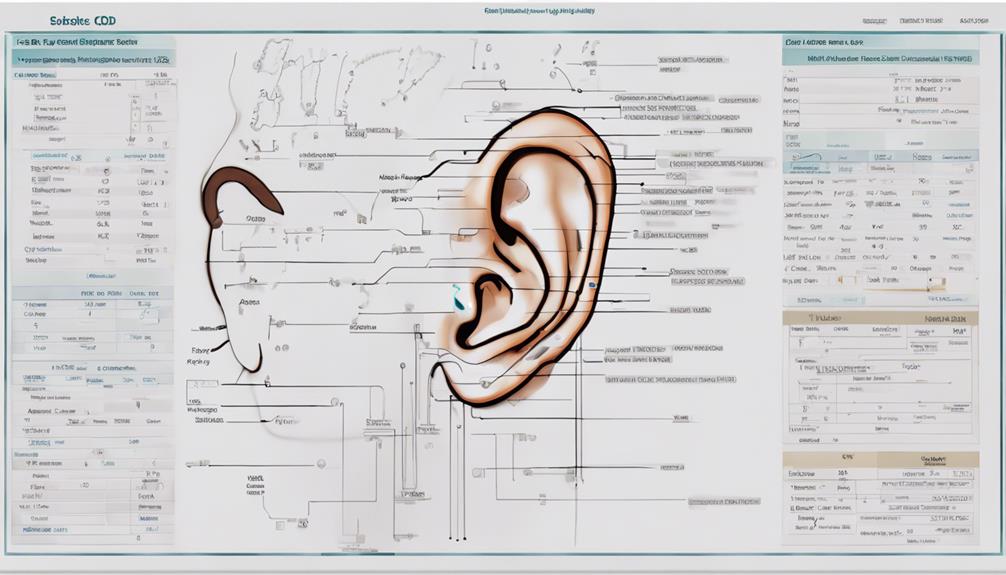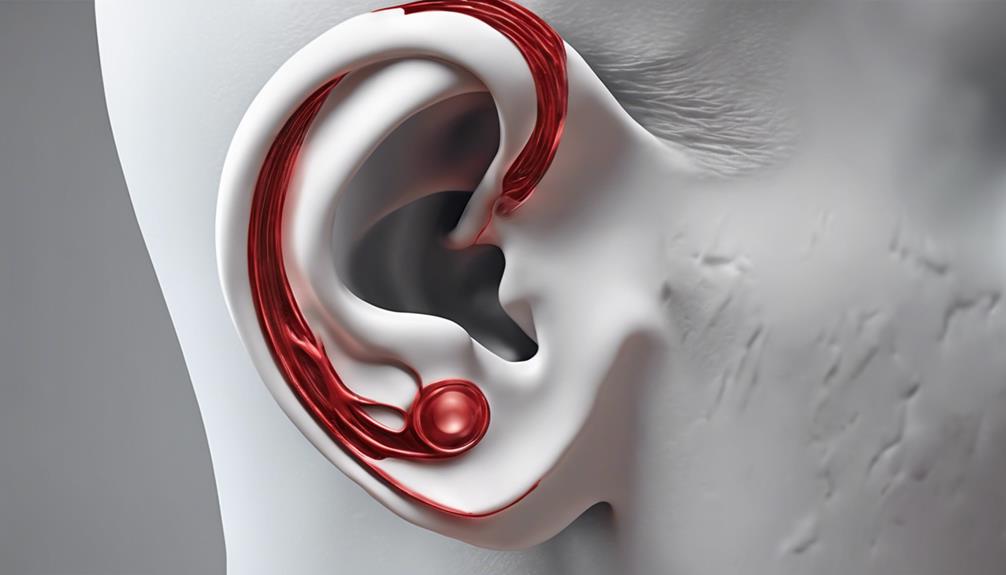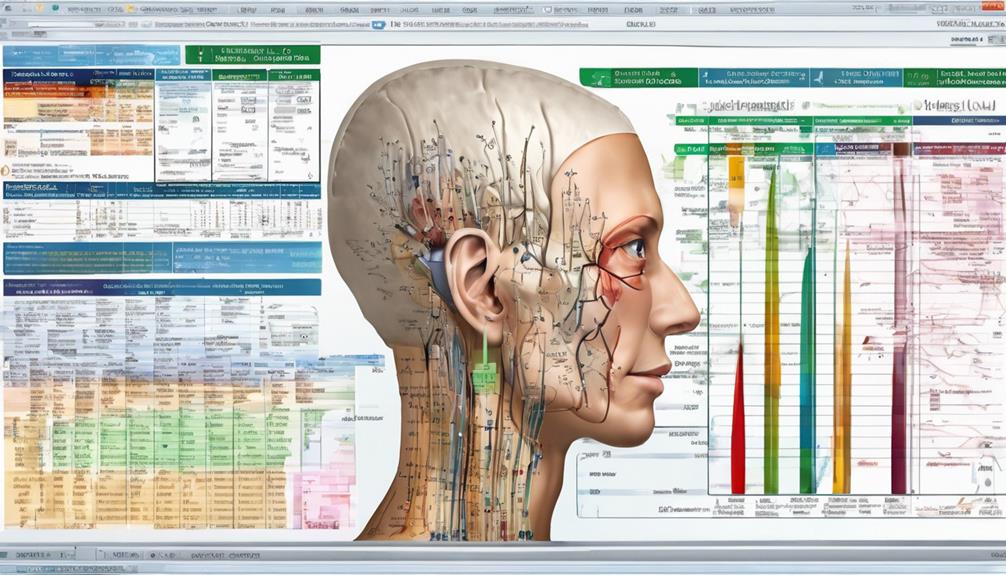Exploring the realm of diagnosing hearing impairments, it is fascinating to note that approximately 466 million people worldwide are affected by hearing loss that interferes with their daily activities, according to the World Health Organization.
When it comes to pinpointing these auditory challenges, understanding the specific ICD codes can provide vital insights into the nature and extent of hearing impairments. From conductive to sensorineural, each code represents a unique facet of hearing loss.
By deciphering these codes, healthcare professionals can tailor interventions to address individual needs effectively.
Key Takeaways
- Proper coding crucial for accurate treatment planning
- Early detection essential for sensorineural hearing loss management
- Identification of mixed hearing loss elements vital for tailored treatment
- Accurate coding ensures precise diagnosis and billing
ICD-10-CM Code for Conductive Hearing Loss
When diagnosing conductive hearing loss, healthcare providers utilize specific ICD-10-CM codes to classify the type and severity of the condition accurately. For bilateral conductive hearing loss, the designated code is H90.0, whereas unilateral conductive hearing loss in one ear with normal hearing in the other ear is coded under H90.1.
In cases where the specific type of conductive hearing loss is unspecified, healthcare professionals employ the code H90.2. Conductive hearing loss stems from problems in the outer or middle ear, impeding the transmission of sound effectively to the inner ear.
Accurate coding of conductive hearing loss is pivotal as it lays the foundation for correct diagnosis and treatment planning. Understanding the nuances between conductive and sensorineural hearing loss is crucial for healthcare providers to offer targeted interventions that address the unique challenges presented by each type of hearing impairment.
ICD-10-CM Code for Sensorineural Hearing Loss
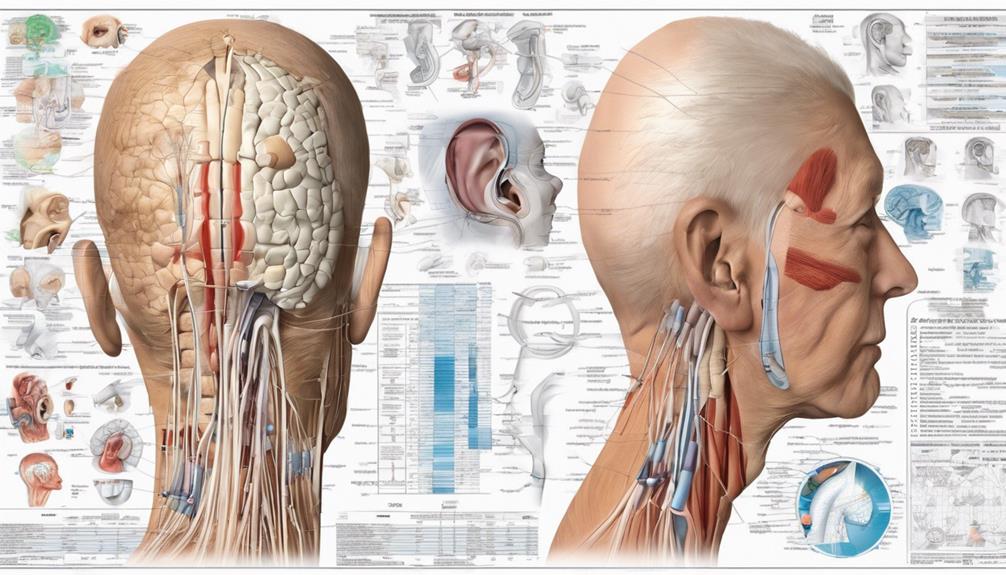
The ICD-10-CM code designated for bilateral sensorineural hearing loss is H90.3. Sensorineural hearing loss results from inner ear damage or issues with the auditory nerve. Here are three key points about sensorineural hearing loss:
- Causes: Sensorineural hearing loss can be caused by various factors, including aging, genetic predisposition, and exposure to loud noises over time.
- Symptoms: Individuals with sensorineural hearing loss may experience difficulty understanding speech, distinguishing between sounds, and hearing in noisy environments.
- Management: Treatment options for sensorineural hearing loss often involve hearing aids or cochlear implants to improve hearing function. Early detection and intervention are crucial to prevent further deterioration of hearing abilities.
Accurately assigning the ICD-10-CM code H90.3 is essential for healthcare professionals to diagnose and plan appropriate treatments for patients with sensorineural hearing loss. Proper coding facilitates streamlined care and ensures individuals receive the necessary support for managing their condition effectively.
ICD-10-CM Code for Mixed Hearing Loss
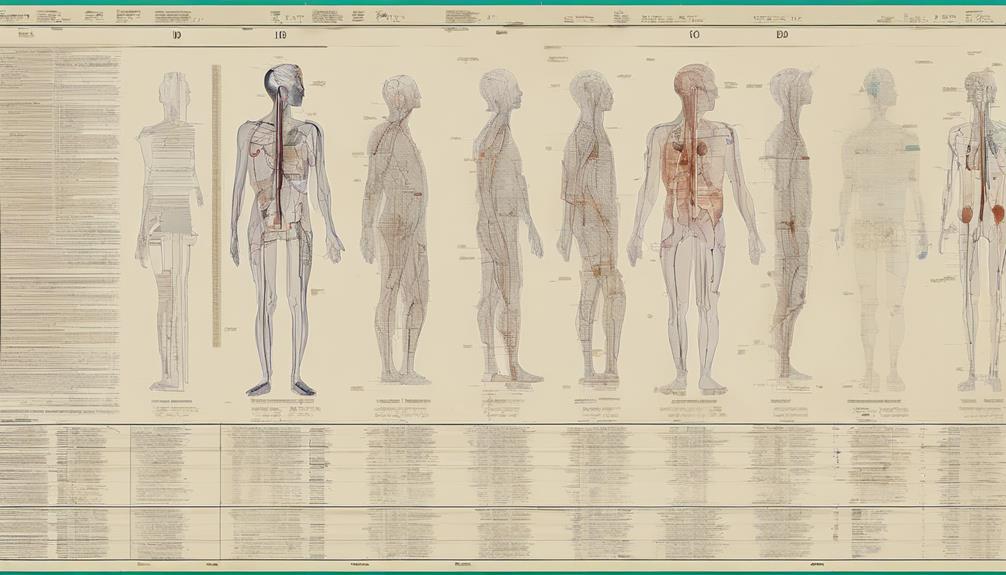
In the realm of diagnostic coding for hearing impairments, our focus shifts to the ICD-10-CM code for mixed hearing loss, which encompasses a blend of conductive and sensorineural elements. When documenting cases involving mixed conductive and sensorineural hearing loss, it is crucial to assign the correct ICD-10-CM code, which for this specific condition is H90.5. This code indicates the presence of both types of hearing loss within the same ear, allowing healthcare providers to accurately capture the complexity of the patient's auditory issues. Common etiologies for mixed hearing loss include chronic ear infections and trauma to the ear, highlighting the importance of a thorough medical history and examination. Proper identification and coding of mixed hearing loss facilitate tailored treatment plans and interventions aimed at addressing both the conductive and sensorineural components effectively.
| ICD-10-CM Code | Diagnosis | Description |
|---|---|---|
| H90.5 | Mixed Hearing Loss | Both conductive and sensorineural components present |
ICD-10-CM Code for Unspecified Hearing Loss
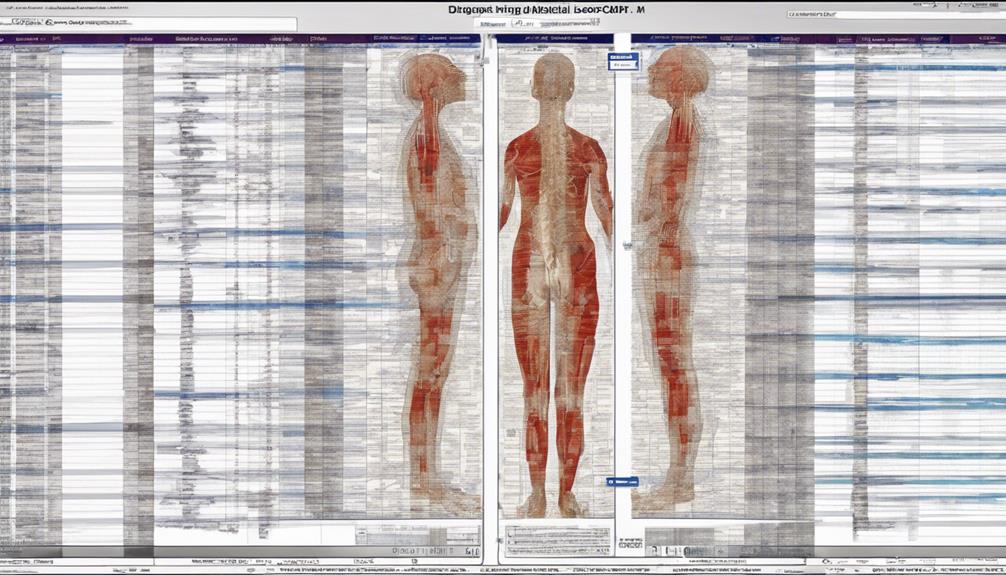
Addressing unspecified hearing loss in medical coding requires precise utilization of the ICD-10-CM code H91.90. This code specifically denotes hearing loss in an unspecified ear, ensuring accurate diagnosis and billing practices. When dealing with cases of unspecified hearing loss, providers must adhere to Chapter-specific guidelines to exclude conditions like abnormal auditory perception or noise-induced hearing loss.
To effectively manage this condition, here are three essential points to consider:
- Proper Documentation: Ensuring detailed and accurate medical documentation is crucial when using the ICD-10-CM code for unspecified hearing loss to support the diagnosis and treatment provided.
- Billing Considerations: Billing for services related to unspecified hearing loss, such as speech therapy, may require additional diagnosis codes like F80.4 to align with billing requirements and ensure proper reimbursement.
- Coding Accuracy: Precise and correct coding practices are essential to accurately report cases of unspecified hearing loss, facilitating effective communication between healthcare providers, insurers, and other stakeholders.
ICD-10-CM Code for Bilateral Hearing Loss
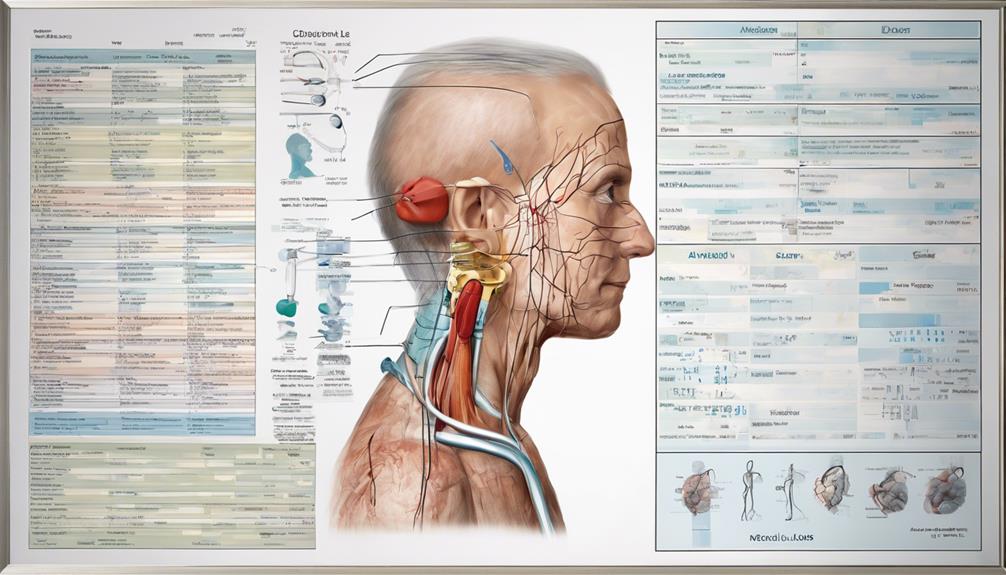
How can healthcare providers accurately code and document bilateral hearing loss in the ICD-10-CM system?
When dealing with bilateral hearing loss, the specific ICD-10-CM codes to utilize are H90.0 for bilateral conductive hearing loss and H90.3 for bilateral sensorineural hearing loss.
It's crucial to correctly identify the type of hearing loss present in each ear to assign the appropriate code. If the hearing loss is conductive and affects both ears, H90.0 should be assigned. On the other hand, if the loss is sensorineural and impacts hearing in both ears, H90.3 is the correct code to use.
It's important to differentiate between unilateral and bilateral hearing loss when assigning ICD codes to ensure accurate documentation of the patient's condition. Additionally, for cases where the exact nature of the hearing loss is unspecified but affects both ears, the code H90.2 for unspecified conductive hearing loss can be applied.
Proper coding ensures effective communication among healthcare professionals and accurate billing for services rendered.
Frequently Asked Questions
What Is the ICD-10 Code for Hearing Loss?
The ICD-10 code for hearing loss is essential for accurate diagnosis and treatment. Understanding the code helps healthcare professionals classify the type and severity of hearing loss effectively. By using the correct ICD code, we ensure proper documentation and billing accuracy.
This system streamlines communication among healthcare providers, leading to better patient care. The right code guides appropriate interventions, aiding in the management of hearing loss cases.
What Is the ICD-10 Code for Hearing Loss in 2023?
We've got the latest scoop on the ICD-10 code for hearing loss in 2023. H91.90 is the go-to code for unspecified hearing loss cases this year. It's crucial for accurate billing and tracking, especially when the specifics of the hearing loss or the affected ear are unclear.
This code falls under specific guidelines to ensure proper documentation in medical records. Stay tuned for more detailed insights into coding practices for hearing-related diagnoses.
What Are the 4 Types of Hearing Loss?
Absolutely!
The 4 types of hearing loss are Conductive, Sensorineural, Mixed, and Central.
Conductive hearing loss involves difficulty in sound waves reaching the inner ear.
Sensorineural hearing loss is caused by damage in the inner ear or auditory nerve.
Mixed hearing loss is a combination of conductive and sensorineural issues.
Central hearing loss stems from the central nervous system affecting auditory processing.
Each type requires specific evaluation and management strategies.
What Is the ICD-10 Code for Other Disorders of Hearing?
When addressing the query about the ICD-10 code for other hearing disorders, it's crucial to note that H93.8 encompasses various conditions like hyperacusis and diplacusis.
Proper documentation supporting this code is essential for accurate billing and diagnosis. Healthcare providers must ensure detailed records to validate the use of H93.8, aiding in reimbursement processes.
Understanding these intricacies enhances precision in treatment planning for uncommon hearing issues.
Conclusion
In conclusion, utilizing the specific ICD-10-CM codes for different types of hearing loss offers a precise and detailed way to diagnose and track patients' auditory impairments.
Whether it's conductive, sensorineural, mixed, unspecified, or bilateral hearing loss, these codes play a crucial role in guiding healthcare providers towards appropriate treatment and management strategies.
By accurately documenting and monitoring these conditions, patients can receive the optimal care they need for their hearing health.


